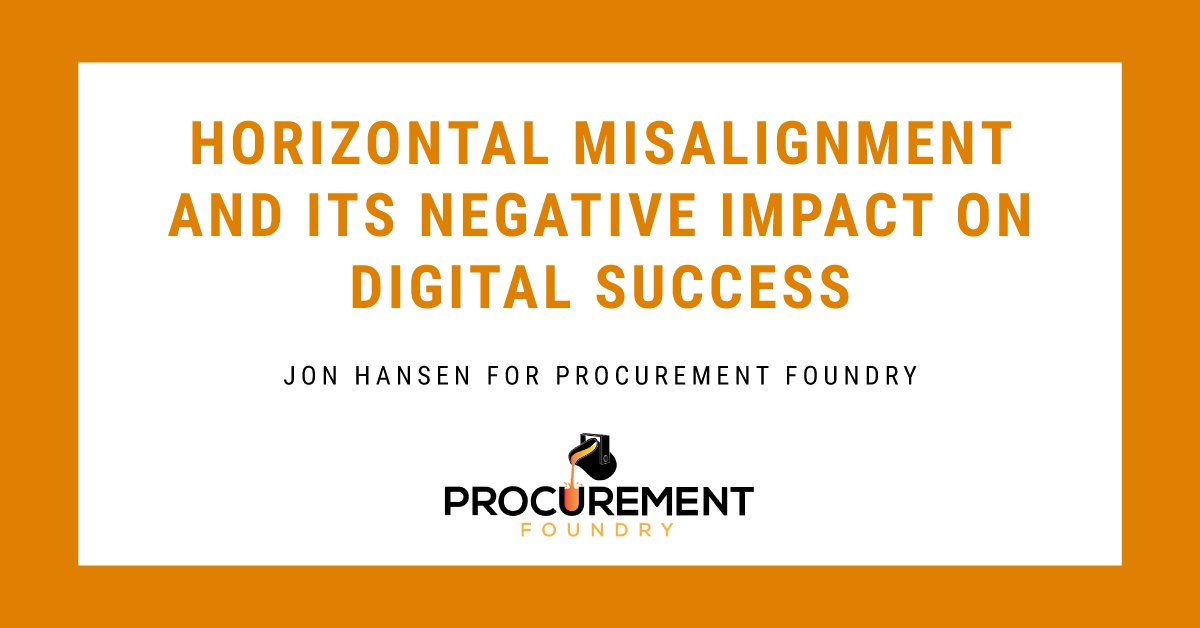Maximizing Savings Opportunities and Procurement's Strategic Value for CPOs
Saving money is not always about pinching pennies: advanced and data-driven insights enable you to identify real cost-saving opportunities, negotiate...
2 min read
![]() Jon Hansen
:
7/26/21 2:00 AM
Jon Hansen
:
7/26/21 2:00 AM

I once read that the qualification for a superpower is that it can be used for either good or evil, and in this case it has an impact on digital success.
When it comes to social media, the same rule also applies. What this means is that if you can look beyond the Loch Ness Monster claims or the apparent sightings of Elvis at a local 7-Eleven, there are some real gems of insight.
For example, in his recent LinkedIn post, Procurement Foundry’s Regional Chapter Leader for the Toronto Region, Larry Leung, discussed the impact of underutilized software and poor (user) adoption.
While identifying an issue is not providing an answer, fortunately, Larry, as usual, provides a helpful recommendation for addressing the problem. However, before we share Larry’s solution, let’s understand the origin of underutilized software and low adoption rates.
According to CPO Arena, research indicates that most organizations expand their digital solution strategy horizontally, meaning that overall, they only utilize between 10% and 20% of implemented technology capability.
Part of the reason is that they fail to recognize the extended impact of the solutions they use, choosing instead to acquire technology that aligns with the most pressing issues. In other words, a short-term reactive approach versus a long-term proactive and progressive implementation and utilization strategy.
One of the more interesting statistics that reflect this horizontal practice in all areas of the enterprise came from a CIO survey. When asked how many apps are currently in use within their organizations, CIOs estimated about 100 or so apps. However, the average organization has more than 950 apps in use. Once again, this demonstrates a reactive—fill the gap approach rather than a strategically aligned approach that addresses both end-user needs and downstream benefits.
Recognizing that “We all buy software or something to try to solve a problem or fix a pain point and then figure out it doesn’t work well for one’s workflow or one got too busy to learn it,” Larry suggests doing an audit.
By doing an audit, you will be able to “find out if something you use already” has an added “functionality or capability” that you haven’t previously used.
Of course, his audit suggestion includes an important caveat: “as long as you’re not hard on yourself for buying it or beginning a trial/using it and then fading from it, it’s all good.”
Larry points out that doing an “audit without blame” (the Jim Collins’ influence duly acknowledged) is so important, as it facilitates an opportunity to step back and re-evaluate what you have without the need to explain or justify why you did it.
The recent Deloitte 2021 CPO Survey provides some interesting insights into why an audit like Larry suggests is timely.
While CPOs are “still heavily focused on costs,” their focus is expanding to include many new areas such as accelerating “M&A integration/divestiture programs” and “driving continuous improvement.” It is no surprise that being able to meet these new demands involves the “overhaul” of legacy processes, policies, metrics, tools, and (perhaps most challenging of all) mindsets.”
According to the Deloitte Survey, the secret to CPO success is agility, and agility starts with knowing what you have, how to use it more proficiently, and when and what to add to deliver measurable bottom-line results.
Now that is an expanded horizon worth pursuing.

Saving money is not always about pinching pennies: advanced and data-driven insights enable you to identify real cost-saving opportunities, negotiate...

The topic of our recent roundtable discussion with a dozen Procurement Foundry community members—exploring potential flaws in procurement incentive...

Every 30 days or so, I get the same alert on my phone—“Your electricity bill is available for viewing.” I take a quick look, make sure nothing seems...